Our Adventure to Momiji at Tjing Tjing
R595 per person for the tasting menu
Momiji – meaning autumn leaves in Japanese – at Tjing Tjing has a set menu which is only available at certain times of the year. We gleefully got one of those rare bookings and excitedly headed over. Large origami bunnies decorated the restaurant, including adorable ceiling patterns which created an eclectic and unique atmosphere. Accompanied by family members, we relaxed to enjoy the meal.
Our waiters Aaron and Anna provided us with lemony smelling oshibori – hand towels used before a meal. We were also provided with Momiji’s menu which was set on small easels with helpful descriptive notes for each course.
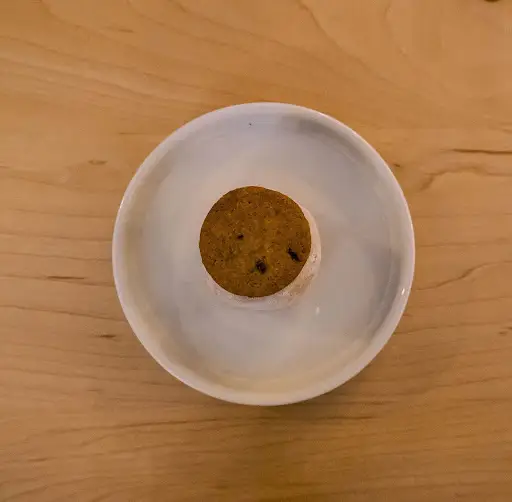
Then the meal began! We were delighted by an amuse bouche of savoury mochi with a cracker on top, both crunchy on the outside and soft in the centre with a liver-y flavour.
Next came an assortment of sashimi, composed of trout marinated with ponzu, and kob with soy and sesame. The trout was topped with small ponzu cubes that tasted of soy sauce, a quirky addition to the plate, which acted as the replacement for dipping in soy sauce. The sashimi came with three separate additions, namely daikon, wasabi, and ginger.
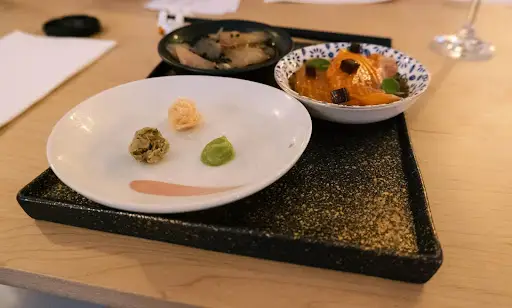
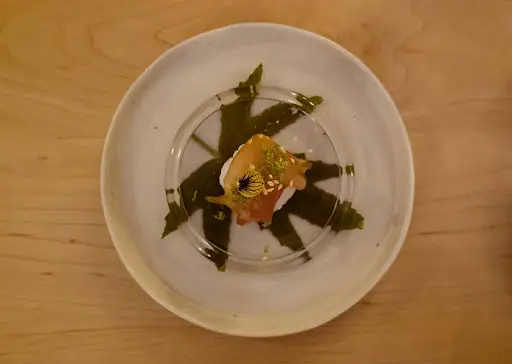
The Lime Nigiri smelled wonderful. It was visually exquisite with a wonderful taste. The taste of silverfish with multiple instances of citrus accompaniments made it a memorable dish. Owen looked pensive as he took photo after photo, the click of the shutter punctuating each shot.
The Mushroom Nigiri had meaty flavours, smoky rich with soft, moist rice. Using an oyster mushroom and miso butter, the course was a full, all-in-one bite.
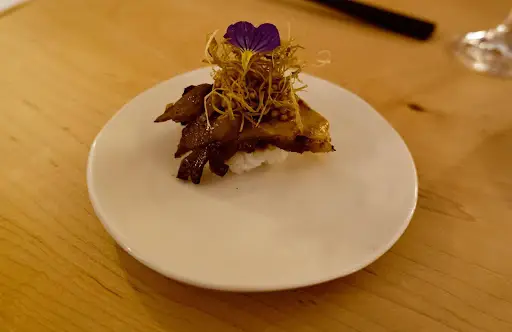
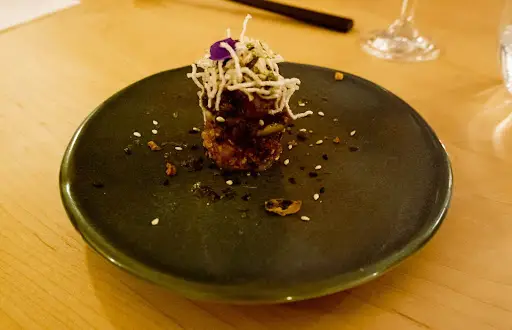
Following that was a Shiso Nigiri, a piece of trout wrapped in pickled shiso leaf, which boasted a more umami flavour. The trout seemed to substitute the salmon very well with a similar colour and fattiness, especially when dipped in the ponzu sauce. My little brother endeavoured with his chopsticks.
Yukke Nigiri was the next course, a colourful assortment of finely chopped meat, adorned with red onion and chives. The crispy rice base added a unique texture, completing this crunchy delicacy. Our stomachs began to get full, but there was much more left to enjoy.
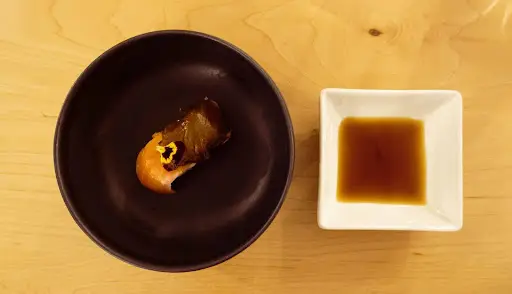
The Edamame accompanying our meal was an unusual mix of matcha and salt. Having never tried this assortment, there was a sense of excitement and trepidation as we had our first bites. The mixture was unique, a savoury matcha flavour that grew more delicious with every bite. The bowl emptied quickly, with a desire for more growing alongside it.
Futomaki, or ‘fat roll’ in Japanese, was the next course. Two large pieces of rolled sushi, with carrots, daikon, cucumber, and the famous Japanese kewpie mayonnaise made this traditional dish a unique blend of flavours.
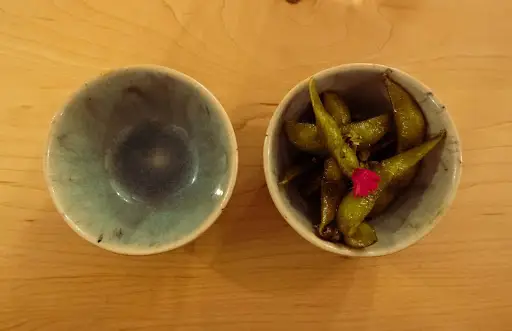
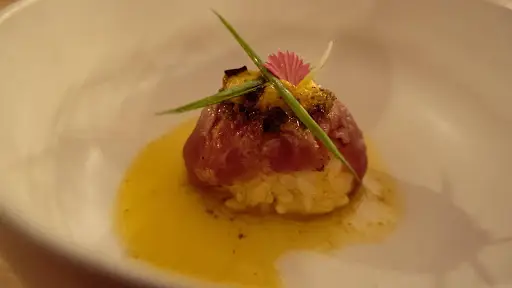
The Aged Beef Nigiri that came next was unreal, spicy and buttery, peppery with a perfect dust and fat balance. It was mellow, which evoked a wintery atmosphere akin to Hokkaido or Kobe. In a butter sauce lay a dry aged rump, with Japanese togarashi spices and a crispy garlic on top of the delicate piece. We wished that we could have ordered multiple servings of this dish, but such is the substance of a tasting menu. By this time my mom was beginning to worry that we left the dogs at home for too long.
Our main dish came near the end of the menu, a chazuke, or traditional Japanese hot dish consisting of tea poured over rice. This dish was interactive as it came to us, we poured in the broth over the rice and fish ourselves, adding in additional seaweed and cucumber. In this instance, our chazuke consisted of fried yellowtail and a dashi broth. Our stomachs were nearly full at this time, but we happily ate the warming soup, a dish perfectly suited for a cool evening.
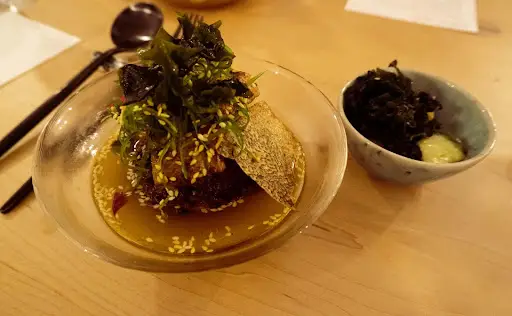
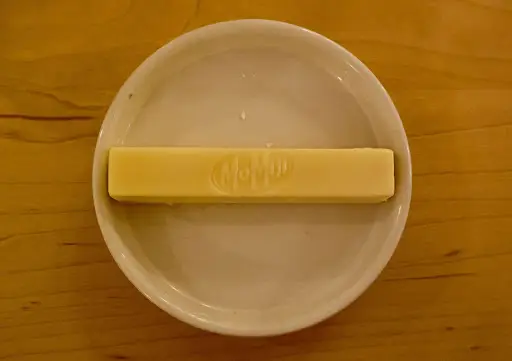
As dessert arrived, we were excited to see what sort of unique combination there would be to finish off the meal. To start, there was a wasabi ice cream sandwich topped with a small piece of nori seaweed. The combination of spicy wasabi and sweet ice cream was unique, for those who are not fans of wasabi, the flavour may still be slightly off putting. To finish off the dessert course, there was a surprise Momiji “kit kat”, with the restaurant name written in the bar, followed by a final mochi.
During our meal, we also tried out South African brewed umeshu by Tanuki and Pienaar & Son. With only 200 bottles of this plum wine made, it was a unique blend of the South African and Japanese culinary landscape, evocative of Momiji’s menu as a whole. We took the bottle home as a souvenir, a memory of a wonderful meal. We left feeling full and happy, and in the end the dogs were fine.
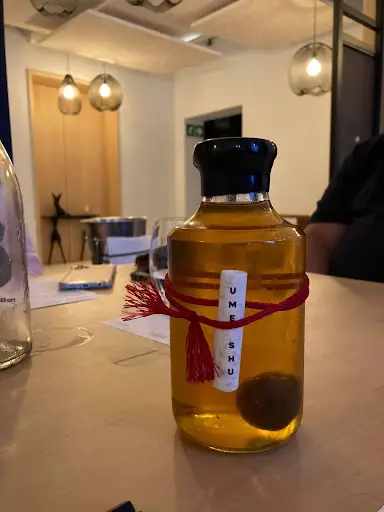

Pingback: Where do you go for the best Japanese food in the Western Cape, South Africa? – Japanese Language Club South Africa